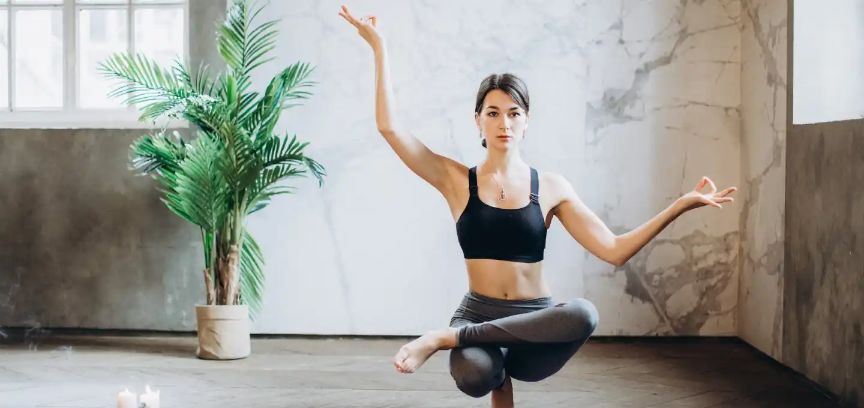Yoga vs. Pilates: Choosing the Right Practice for You
6 min read
03 Jun 2024
Yoga and Pilates are two popular mind-body practices that offer numerous physical and mental benefits. While both disciplines focus on enhancing flexibility, strength, and overall well-being, they have distinct approaches and philosophies. Choosing between yoga and Pilates depends on your fitness goals, preferences, and what resonates with you personally. In this comprehensive exploration, we'll delve deeper into the key differences and similarities between yoga and Pilates to help you make an informed decision about which practice is the right fit for your journey to wellness.
Yoga: A Holistic Journey
Yoga is an ancient practice that originated in India and has evolved over thousands of years. It encompasses a wide range of styles and traditions, but all forms of yoga share a common goal: union of the mind, body, and spirit. Yoga classes typically involve a series of postures, known as asanas, combined with controlled breathing and meditation techniques. This holistic approach aims to promote harmony, balance, and inner peace. Yoga offers various styles, including Hatha, Vinyasa, Ashtanga, and more, allowing practitioners to choose the style that aligns with their goals and preferences. Whether you seek spiritual enlightenment or improved physical fitness, yoga provides a versatile path to holistic well-being.

Pilates: Core Strength and Control
Pilates, on the other hand, is a more recent practice developed by Joseph Pilates in the early 20th century. Pilates focuses on core strength, stability, and control of the body's movements. The primary principles of Pilates include breath, concentration, control, centering, precision, and flow. Pilates exercises are typically performed on specialized equipment, such as the reformer and Cadillac, or on a mat. This practice emphasizes building a strong core, improving posture, and enhancing overall body awareness. Pilates is known for its precise and controlled movements, making it an excellent choice for individuals seeking targeted muscle strengthening and postural improvements. Whether you're an athlete aiming for better performance or someone recovering from an injury, Pilates offers a structured approach to physical fitness and rehabilitation.
Physical Benefits
Both yoga and Pilates offer a wide range of physical benefits. Yoga improves flexibility, balance, and joint mobility. It also strengthens muscles, tones the body, and promotes healthy circulation. Many yoga practitioners find that it enhances their overall posture and alignment. Through a regular yoga practice, you can increase your body's range of motion, which is especially beneficial for individuals with sedentary lifestyles or those seeking relief from muscle tension. Pilates, on the other hand, focuses on building a strong and stable core, which can alleviate back pain, enhance spinal flexibility, and improve abdominal strength. Pilates is particularly effective in targeting specific muscle groups, making it a suitable choice for those seeking to address specific physical concerns, such as recovering from injuries or improving postural imbalances.
Mental Benefits
Both practices also provide mental benefits. Yoga places a significant emphasis on mindfulness and relaxation. Regular yoga practice can reduce stress, anxiety, and improve mental clarity and focus. It offers tools for managing emotions and achieving a sense of inner peace. Yoga encourages self-awareness and emotional balance, allowing you to better cope with the challenges of daily life. Pilates, while not as meditation-focused as yoga, still encourages mental concentration and awareness. The precise and controlled movements require mindfulness, promoting a mind-body connection. Pilates can enhance mental discipline and concentration, which can be beneficial in daily life, particularly in tasks that require focus and mental resilience.
Breathing Techniques
Breathing plays a crucial role in both yoga and Pilates. In yoga, specific breathing techniques, known as pranayama, are integrated into practice to enhance energy flow, calm the mind, and deepen postures. Yoga often emphasizes diaphragmatic breathing, which engages the full capacity of the lungs and promotes relaxation. The coordination of breath with movement in yoga enhances mindfulness and helps you stay present in each pose. In Pilates, breathing helps facilitate precise and controlled movements. Pilates exercises typically involve lateral breathing, which involves inhaling through the nose and exhaling through pursed lips, promoting core engagement and stability. Both practices use breath as a tool to improve physical and mental well-being, making it a fundamental aspect of your practice.
Equipment and Props
One notable difference between yoga and Pilates is the use of equipment and props. While yoga primarily relies on a mat and occasionally props like blocks and straps, Pilates often incorporates specialized equipment like the reformer, which uses springs for resistance. The reformer and other Pilates apparatus provide additional support and resistance for exercises, allowing for a broader range of movements and variations. If you prefer the use of equipment and enjoy a structured, controlled environment, Pilates may be more appealing to you. Yoga, with its minimalistic approach, is well-suited for those who prefer simplicity and freedom of movement. With yoga, all you need is your mat and a willingness to explore your body's capabilities.
Flexibility and Variety
Yoga offers a high degree of flexibility and variety in its practices. With numerous styles and traditions to choose from, you can tailor your yoga experience to your specific preferences. Whether you seek a vigorous, fast-paced practice or a gentle, restorative one, you can find a yoga style that suits your mood and needs. Yoga's adaptability extends to practitioners of all levels, from beginners to advanced yogis. The practice accommodates your goals, whether they involve building strength, improving flexibility, or finding inner calm. Pilates, while diverse in its exercises, follows a more structured and systematic approach. Pilates sessions often include a set sequence of exercises that target core strength and control. If you appreciate routine and progression, Pilates may be the better choice for you. It offers a clear path to developing core stability and body awareness through a series of consistent movements.
Choosing the Right Practice for You
Ultimately, the choice between yoga and Pilates comes down to your individual goals and preferences. If you're seeking a holistic practice that promotes mindfulness, balance, and harmony, yoga is an excellent choice. It offers a wide range of styles and can be adapted to various fitness levels, allowing you to progress at your own pace. On the other hand, if you're focused on core strength, precise movements, and body control, Pilates may be the ideal fit. Pilates provides a structured approach to physical fitness and rehabilitation, making it particularly appealing for individuals with specific fitness objectives or those recovering from injuries. Both practices offer physical and mental benefits, so consider what resonates with you personally and aligns with your fitness journey. You can also explore both practices to find out which one best suits your needs, as they can complement each other for a well-rounded wellness regimen.
Conclusion: Embrace Mind-Body Wellness
Whether you choose yoga, Pilates, or both, both practices have the potential to transform your physical and mental well-being. Embrace the journey of mind-body wellness, and remember that your choice is a personal one. Your yoga mat or Pilates reformer can become your sanctuary, a place where you cultivate strength, balance, and inner peace. Whichever path you choose, the important thing is to prioritize your health and well-being by nurturing your body and mind through the practice that resonates with you most. Whether you're finding your zen in yoga's flow or building core strength in Pilates' precision, you're on the path to a healthier and more balanced life.



